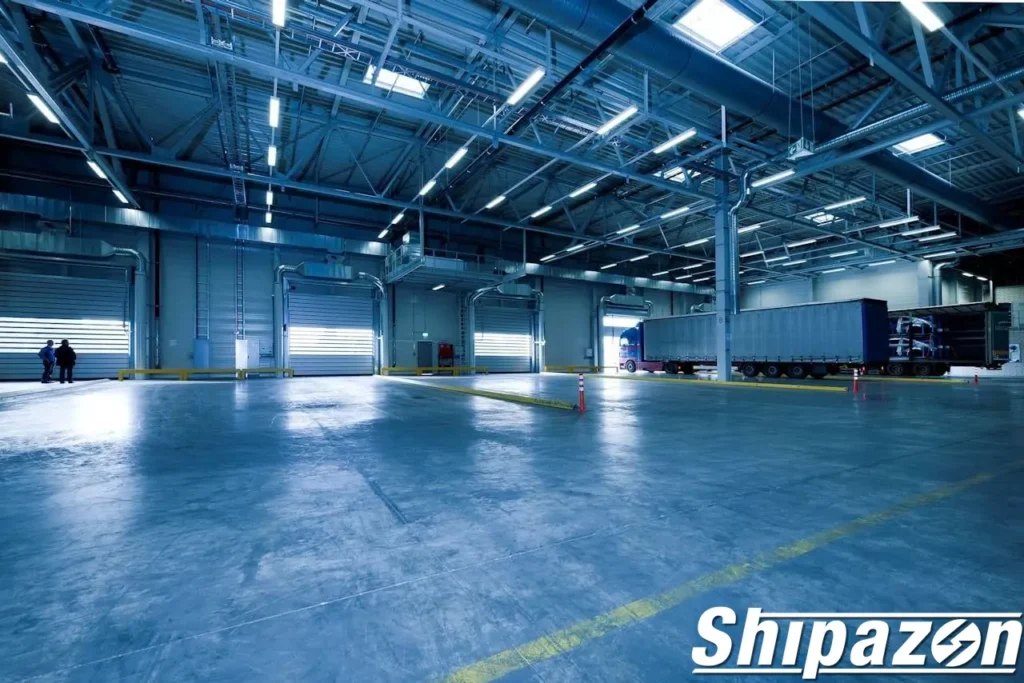“If you’re looking for a cross dock near your location in Washington, our Kent facility is built for speed and efficiency. We handle palletized, floor-loaded, container, OTR, 3PL, manufacturing, e-commerce, and retail cross docking — all designed to move goods quickly without unnecessary storage delays.”
— Andre Ren, Co-Founder & Logistics Manager at Shipazon
Finding efficient goods cross dock near your location is simple and easy. Cross docking has become a well known process in modern logistics centers and warehouses. Its main purpose is to cut down costs and save time on deliveries so that products can be sent with little to no delay. Cross docking is basically the transfer of products from one store to another.
This article explicates the benefits and functions cross docking provides, how to effectively find a cross dock located near you, and what benefits cross docking provides to consumers.
Contents
What is Cross Docking?
In cross docking, goods received at a warehouse and distribution center are immediately dispatched to the next delivery vehicle. This delivery vehicle transports goods to the next point where these products are needed. The only storage that is stored is the storage at the depot.
The process starts by getting the goods and receiving until sending the goods back. First, a variety of goods reach the cross dock terminal. The cross dock facility receives goods, stores them temporarily, sorts them, and delivers them to the next store after the sorting of the goods. This is done so that the receivers can have all the essential products to meet their needs.
After this, the goods are transferred straight to the next vehicle for their final delivery to the destination store. This is done without keeping the goods in the warehouse for long periods. This method offers many benefits.
One is the flow of goods, which is time-efficient and speeds up delivery. Another benefit is reduction in the storage and handling costs, the time goods spend in the warehouse.
Lastly, the expenses to the end customer where goods are transferred to the next transportation mode. And lastly, the costs of excess stock and stockpiling inventory are reduced as well. There is also a reduced potential for damage on the goods with minimized movement and handling.
Consolidation of goods from different suppliers for transport cross-docking for distribution is also common. It applies to high turnover and everyday consumer goods. Timely and expedited shipping also calls for its frequent use, particularly in e-commerce. Reducing storage time without losing customer service standards also triggers its use.
Thus, cross-docking helps streamline the overall process by minimizing operational costs in logistics and the consolidation of goods from different suppliers, making it easier for them to be distributed.
Differences Between Cross-docking and Other Methods of Storage and Distribution
Cross-docking differs from other storage and distribution methods used in supply chains due to its unique characteristics. Cross-docking differs from other methods with a focus on reducing the storage and sale of goods in suspension in warehouses and their circulation through the distribution centers. For better understanding, let’s compare cross-docking with other more common methods.
Cross-docking and Traditional Warehouse Storage
Differences Goods in cross-docking systems spend very little time in transit (cross-docking transshipment). The emphasis is on moving them straight from receipt to dispatch. In contrast, traditional warehouse storage keeps goods for a certain period which requires sophisticated management of both storage space and inventory.
Cross Docking vs. Drop Shipping
Goods are still processed through a logistics facility in cross docking where shipping and order fulfillment occurs. In drop shipping, the seller does not store goods. Orders are made and sent directly from the supplier to the consumer without passing through the seller’s storage or distribution center.
Cross Docking vs. Direct Shipping
In cross docking, collection and grouping of goods are done at one place, which is often a synthesis of many suppliers in one place. In direct shipping, the flow is the opposite of cross docking: goods are often shipped straight from supplier to buyer.
Cross Docking vs. Hub and Spoke Distribution
Cross docking is concerned with very short shipping times and zero storage space. In hub and spoke distribution, goods first go to a central place which serves as a hub for sorting and storing the goods before they are sent to the branch locations (spokes). This method allows longer term storage and management of goods inventory.
Where to Find a Cross Dock Near Me?
You can search for a cross dock near me online, for example, using an internet search engine or through a nearby logistics industry platform. You can also ask your business partners for facility recommendations. Don’t forget to ensure a strategic location and good management. The good news is, cross-docking is also an integral part of Shipazon’s warehousing services.
We provide various types of cross-docking, such as palletized cross-docking, container cross-docking, and e-commerce cross-docking. All of these are designed to speed up the flow of goods and maintain an efficient supply chain. Strategically located in Kent, WA, near major ports and distribution centers, we are able to optimize the cross-docking process for various needs, including e-commerce and retail distribution.
Our cross-docking services provide fast, cost-effective, and responsive logistics solutions to the needs of the modern market. This is especially important for products that require fast and efficient delivery, such as e-commerce and retail goods, which are the primary focus of Shipazon’s services.








